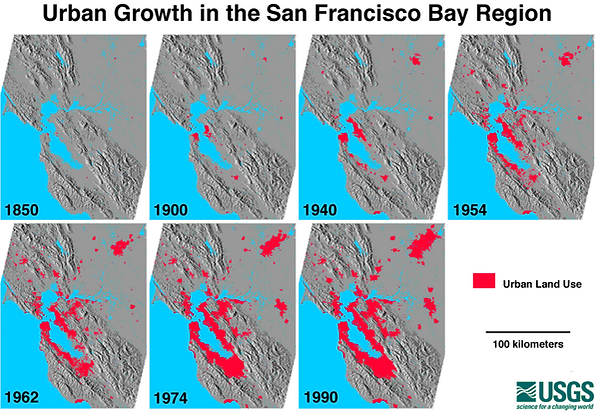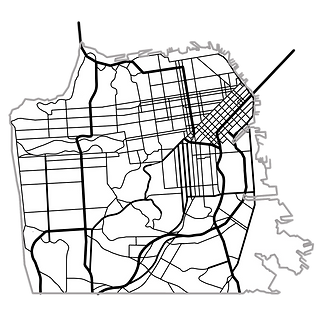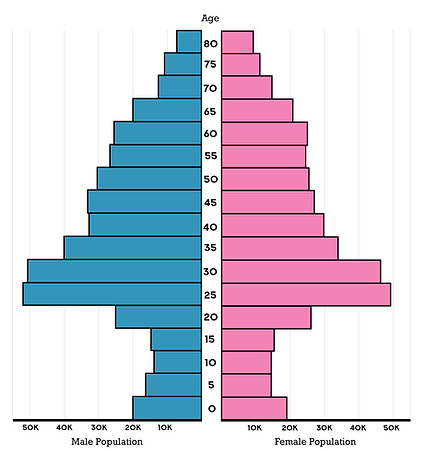
CITY GROWTH
Population Growth

San Francisco experienced its largest population boom from 1848 to 1849 when its population grew a massive 2,400% because of the California Gold Rush. Its population has grown very steadily since then, except for declines during the 1960s through the 1980s, and its population in 2016 is now 864,816. This population only represents the city proper, with a metropolitan area population of around 4.6 million.
+13.6% growth since 2000.
Urban Growth


Demographics

The Chinese population of San Francisco represents the single largest ethnic minority group with 21.4% of the population. Other major Asian groups include: Filipinos (4.5%), Vietnamese (1.6%), Japanese (1.3%), Asian Indians (1.2%), Koreans (1.2%), Thais (0.3%), Burmese (0.2%) and Cambodians (0.2%).
Those of Chinese ancestry are concentrated mostly in Chinatown, Sunset District, and Richmond District. Filipinos are concentrated heavily in Crocker-Amazon and SoMa, and the city has one of the largest Filipino communities outside of the Philippines.



Median Age

Economy
& housing
The economy of San Francisco, CA employs 535k people. The largest industries in San Francisco, CA are Professional, Scientific, & Technical Services, Health Care & Social Assistance, and Accommodation & Food Services.
The highest paying industries are Information, Management of Companies & Enterprises, and Finance & Insurance.
Median household income in San Francisco, CA is $110,816.
Employment by Industries

Employment by Occupations


36.5%
Home ownership
63.8%
National ownership
Summary
Over the years, San Francisco has experienced tremendous growth, breaking population records that were set by those moving in from the Gold Rush Era. According to city-data.com, San Francisco has experienced a 13.9% population change since 2000. The population gender splits almost evenly down the middle being 51% male and 49% female. These factors have pushed for more equal opportunities at success. San Francisco has become an environment that has proven to be a place for people to expand themselves.
The median household income in 2016 has almost doubled since 2000. In 2000 it grew exponentially from $55,221 to $103,801. Median house and condo value are around $1,000,000 rising from $422,000 in 2000.
Silicon Valley has had a tremendous impact in the rising of the property tax since it first emerged. This has created a few systemic issues, a major one being gentrification. The housing market jump pushed low income residents out of the area and to other surrounding areas across and around the bay. San Francisco has emerged as one of the most diverse areas in the country and has the 3rd largest Asian population in the world outside of Asia. Asian Americans take up about 35% of the population, which is led by white Americans at 41%. Although San Francisco is a very balanced and diverse area, some minorities could never catch up to the rising numbers. The African American population is 4% as low income black people were pushed out of the area due to gentrification to supply housing for the Silicon Valley workers. However, they have decided to take a stand and help those who have suffered from the rapid rise in price; in the last eight years they have issued rent control to help those who cannot afford the expensive living costs live an affordable lifestyle.
Being the second most walkable city in America says a lot about a city. Important resources are more accessible to the common person. While this is great for the locals to get around such short distances, it also helps the world become more sustainable. One of the leading examples for sustainability, San Francisco has shown the world an example and model of what a city should be in the 21st century. The key to longevity is coming up with new ways to become more sustainable and waste less energy doing so. The course of actions of San Francisco may not be exactly replicated by other cities, but it will spark ideas and help people find the perfect solution to solving the their own unique issues.